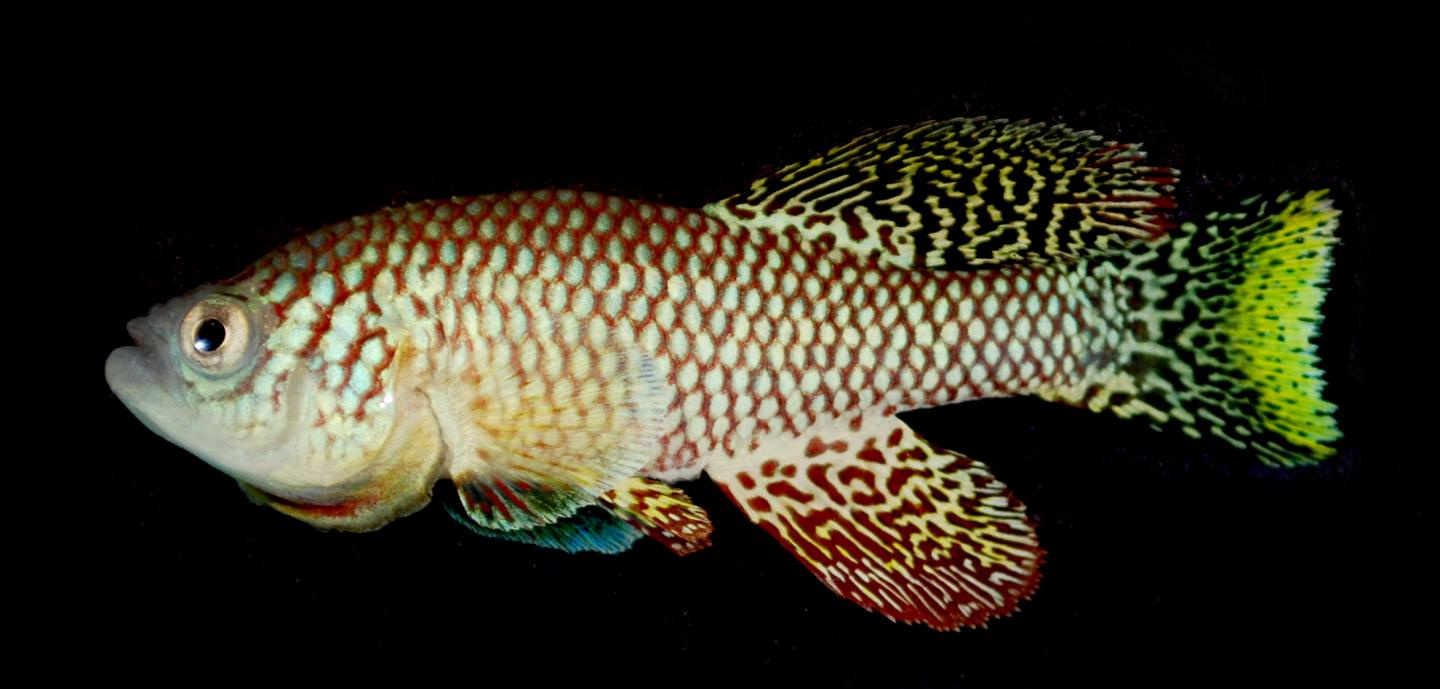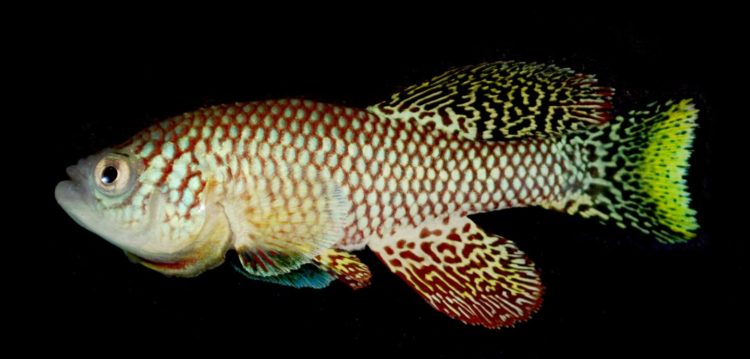Grant will support addition of African turquoise killifish to model animal roster

Credit: MDI Biological Laboratory
BAR HARBOR, MAINE — The study of therapies and interventions to expand healthy human lifespan has been limited by a lack of animal models: traditional vertebrate models such as the mouse live too long to get rapid results, while the most popular model, a roundworm called C.elegans that lives for only three weeks, is rungs away from humans on the evolutionary ladder.
In recent years, however, scientists have developed the African turquoise killifish as a model to bridge this gap. Its short lifespan of only four to six months offers rapid insight into the effectiveness of anti-aging interventions, while its biological traits, including vertebrate-specific genes and organs and a complex immune system, are directly relevant to the study of human aging.
Thanks to a $75,000 grant from The Cotswold Foundation, the MDI Biological Laboratory will add the African turquoise killifish (Nothobranchius furzeri) to its growing roster of animal models, thus strengthening the institution’s longstanding tradition of engaging in comparative research to gain an understanding of the mechanisms involved in aging and regeneration.
“The African turquoise killifish is the shortest-lived vertebrate to be bred in captivity,” said MDI Biological Laboratory faculty member Aric Rogers, Ph.D. “Using it as a model we will be able to rapidly identify and test the genes, gene pathways and environmental manipulations governing aging and longevity, which in turn could lead to new therapies to extend healthy human lifespan.”
The new model’s ability to regenerate means it can also be used as a platform to study how regenerative ability declines with age, thus allowing the institution to build on its new research focus on the interface between aging and regeneration. That focus was established in 2019 with the addition of a course on the interrelation between these fields that will be repeated in 2020.
“We are deeply grateful to The Cotswold Foundation for its support of our initiative to become a leader in the unexplored scientific territory at the interface of aging and regeneration,” said Hermann Haller, M.D., MDI Biological Laboratory president. “Because it is a vertebrate, the African turquoise killifish will open doors to new insights into why aging occurs in humans.”
A native of East Africa, the African turquoise killifish was first identified as a new species in 1969. Though prized by aquarium enthusiasts for its brilliant coloration, it wasn’t until 2003 that it attracted the notice of scientists in search of an animal model for aging occupying the space between invertebrates and longer-lived vertebrate models such as the mouse and zebrafish.
An advantage of the new model is that it shares many symptoms of aging with humans, including loss of muscle mass, decline in immune function, even loss of memory. The initial research at the MDI Biological Laboratory, to be conducted by Rogers, Voot Yin, Ph.D., and Sam Beck, Ph.D., will focus on charting the progress of these age-related degenerative changes.
Once the scientists have identified the biomarkers of aging in the new model, they will pursue additional funding to use it to study the interface between aging and regeneration. Rogers anticipates it will eventually be employed as a model by a number of faculty members, as well as by visiting scientists and by students enrolled in courses in these areas.
“The MDI Biological Laboratory has always been committed to the idea of using the animal model that is best suited to the study of the biological problem at hand,” Rogers explained. “With this exciting new model, we will have the ability to explore aging in an animal that ages in a similar manner to us, but at a much faster pace. The only limit to discovery will be our own creativity.”
The African turquoise killifish is not entirely new to the institution: in recent years it has been introduced during summer courses on aging and regeneration by visiting faculty members Dario Riccardo Valenzano, Ph.D., of the Max Planck Institute for Biology of Ageing in Cologne, Germany, and Itamar Harel, Ph.D., of The Hebrew University of Jerusalem.
Valenzano and Harel have been leaders in the development of the colony management techniques, laboratory protocols and genetic tools required to establish the African turquoise killifish as an animal model. Both are former post-doctoral students in the laboratory of Anne Brunet, Ph.D., at Stanford University School of Medicine, one of the pioneers in the use of the new model.
The African turquoise killifish is not to be confused with another valuable model, the Atlantic killifish (Fundus heteroclitus), or mummichog, which inhabits tidal estuaries such as Northeast Creek near the MDI Biological Laboratory. Atlantic killifish from Northeast Creek have long been used by MDI Biological Laboratory scientists to study kidney disease, adaptation to toxic pollution and more.
About the MDI Biological Laboratory
We aim to improve human health and healthspan by uncovering basic mechanisms of tissue repair, aging and regeneration, translating our discoveries for the benefit of society and developing the next generation of scientific leaders. For more information, please visit mdibl.org.
Media Contact
Stefanie Matteson
[email protected]
201-787-7427
Original Source
https:/





